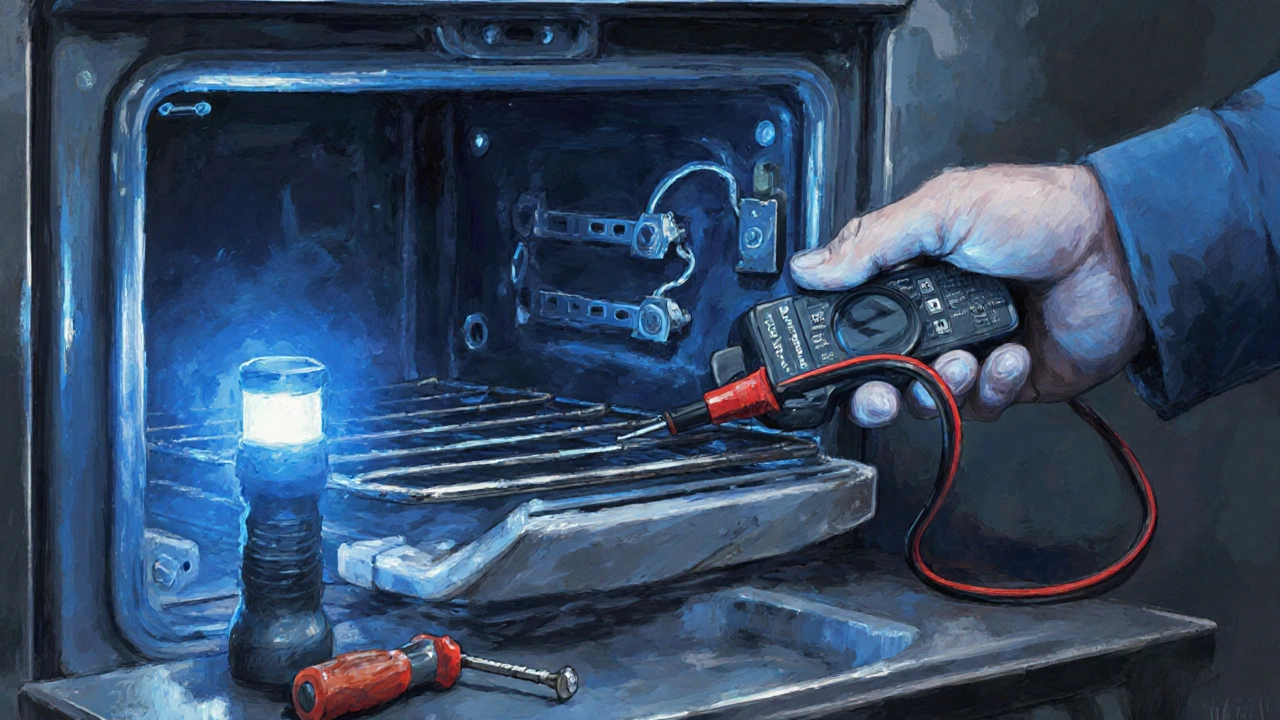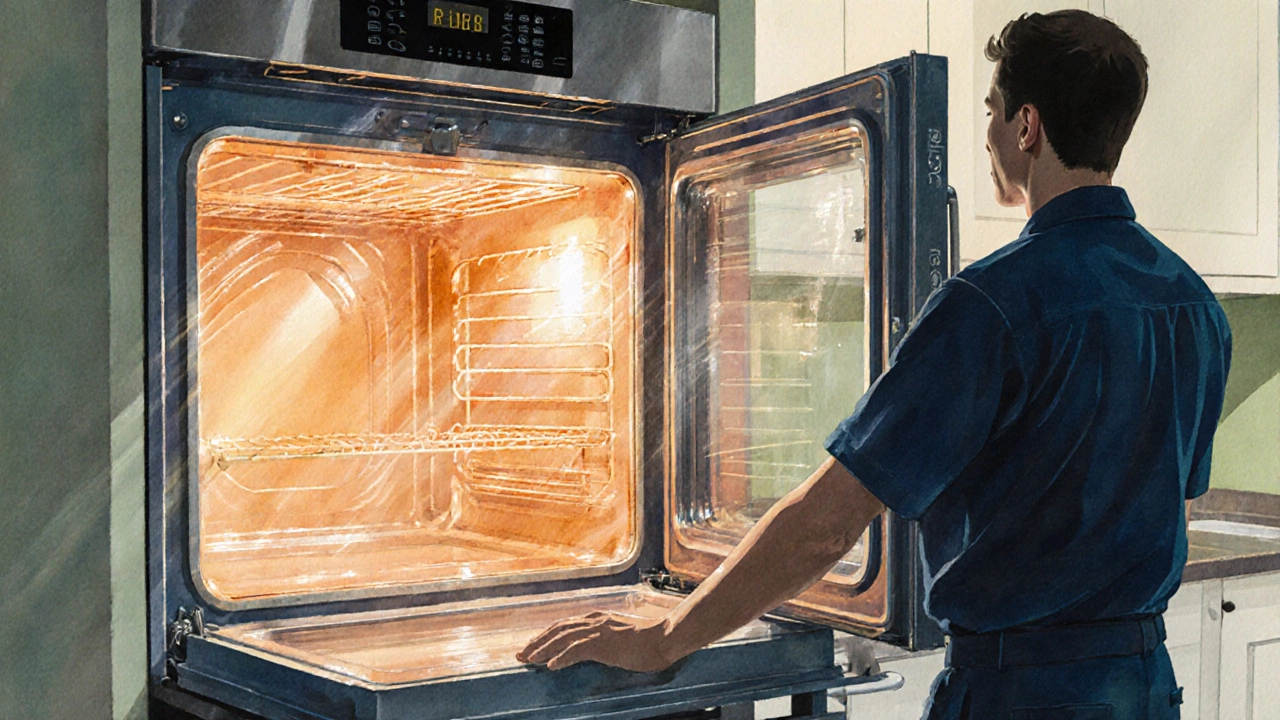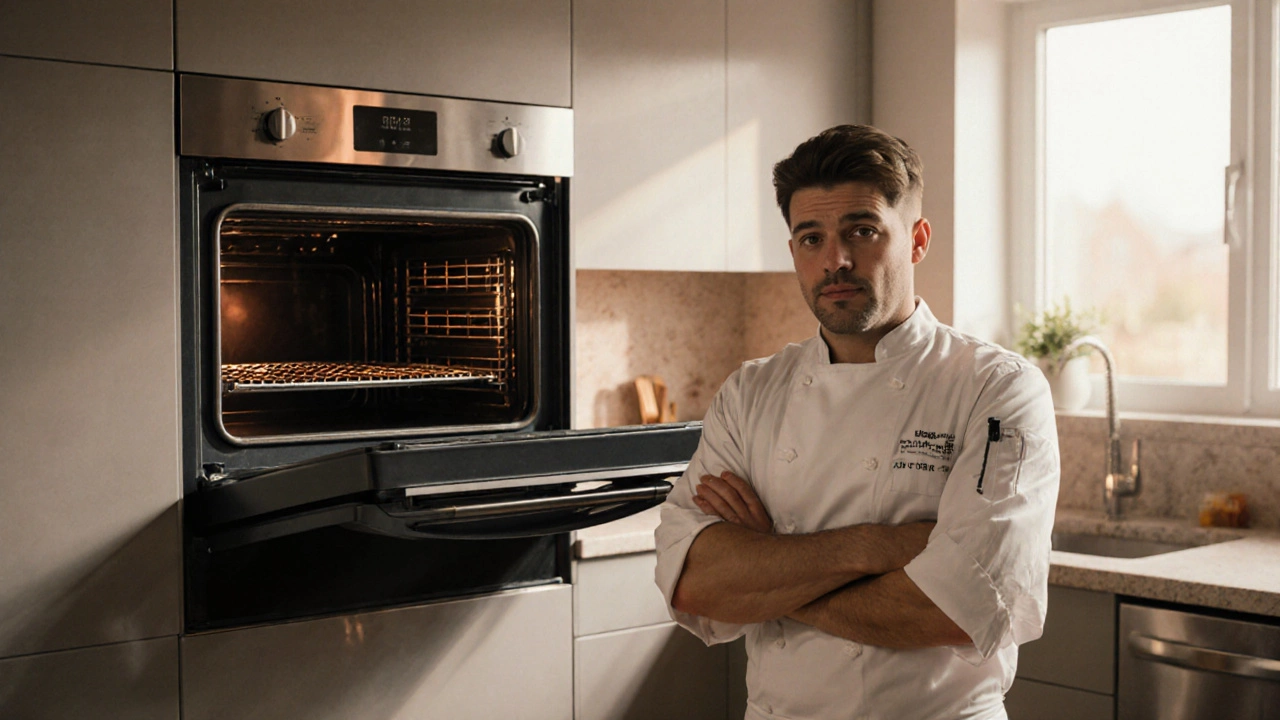Oven Problem Diagnostic Tool
1. What's happening with your oven?
2. Any visible signs of damage or unusual behavior?
3. Does the problem happen consistently?
Your Likely Problem:
Recommended Fix:
When your oven stops doing what it’s supposed to, the kitchen quickly turns into a source of frustration. Below you’ll find the most frequent issues that keep an oven from baking, roasting, or broiling properly, plus clear steps to diagnose and resolve each one.
Understanding the inner workings of an Oven is the first step toward fixing it. An oven is a sealed cooking compartment that uses electric or gas heating elements, a thermostat, and a control system to maintain a set temperature for food preparation. Knowing which part is misbehaving saves time, money, and the headache of calling a technician for a simple fix.
1. Oven Won’t Heat - The Most Common Complaint
If the oven lights up but the interior stays cold, the culprit is usually the heating element. In electric ovens, the bake element runs along the bottom, while the broil element sits on the top. A broken element will show visible cracks or a broken wire.
- Check for continuity with a multimeter; a reading of 0Ω means the element is open and must be replaced.
- Inspect the connections for loose terminals or burnt insulation.
- For gas ovens, verify that the igniter glows orange; a weak or no‑glow igniter prevents the gas valve from opening.
Replacing an element is usually a DIY task: unplug the oven, remove the rear panel, unscrew the element brackets, disconnect the wires, and install the new part. Always match the wattage rating to avoid overload.
2. Temperature Doesn’t Match the Set Point
When you set 350°F and the oven reads 300°F or 400°F, the issue lies in the thermostat or the modern temperature sensor. Older ovens use a mechanical thermostat; newer models rely on a sensor that feeds data to the control board.
- Place an oven thermometer in the center of the rack and compare its reading to the oven’s display.
- If the gap exceeds 25°F, test the sensor with a multimeter. Most sensors show about 1kΩ at 70°F; resistance should rise as temperature increases.
- Replace a faulty sensor or calibrate a mechanical thermostat according to the manufacturer’s manual.
After replacement, run a short bake test to verify accuracy before resuming regular cooking.
3. Oven Door Won’t Close Properly
A misaligned or damaged door gasket allows heat to escape, causing uneven cooking and higher energy use. Examine the rubber seal for tears, compression, or food debris.
- Clean the gasket with warm soapy water and a soft brush.
- If cracks appear, order a replacement gasket matching the oven’s model number.
- Check the hinges; loose screws can cause the door to sag. Tighten them and verify smooth operation.
Replacing the gasket is straightforward: pull the old seal out of its channel, press the new one in place, and ensure an even fit all around the door.

4. Oven Light Works, But Heat Doesn’t Turn On
This symptom points to the control board. Modern ovens use an electronic control board that regulates power to the heating elements. A failed board may still supply power to low‑voltage circuits like the interior light.
- Unplug the oven and remove the back panel to access the board.
- Inspect for burnt components, swollen capacitors, or loose connectors.
- Swap the board with a known good unit or use a board‑level diagnostic tool if you have one.
Because the control board interfaces with many functions, replace it only after ruling out simpler causes such as broken fuses or tripped breakers.
5. Oven Emits Bad Smells or Excess Smoke
Residue buildup on the heating elements or inside the cavity can cause burning odors. In gas ovens, a dirty igniter or clogged burner may produce a sulfur‑like smell.
- Run a self‑clean cycle if your oven has one; this heats the interior to over 900°F, incinerating food splatters.
- Manually remove loose debris with a damp cloth and a soft brush.
- For gas models, clean the burner ports with a non‑metallic brush and verify proper gas flow.
If the smell persists after cleaning, the heating element itself might be deteriorating and need replacement.
6. Oven Won’t Turn On at All
A non‑responsive oven can be traced to the power supply. Check the circuit breaker, the oven’s power cord, and the internal fuse (often a thermal fuse on the back panel).
- Confirm the outlet supplies the correct voltage with a multimeter (usually 240V for North American electric ovens).
- Inspect the cord for cuts or burn marks; replace it if damaged.
- Locate the thermal fuse; if it’s blown, replace it with the exact rating specified in the service manual.
Once power is restored, test the oven’s front controls. A stuck button or faulty keypad can also prevent start‑up and may need cleaning or replacement.
7. Convection Fan Not Working
In convection ovens, the fan circulates hot air for even cooking. A silent fan usually signals a motor failure or a blocked rotor.
- Unplug the oven and remove the fan cover.
- Clear any food particles or debris that might be jamming the blades.
- Test the motor’s continuity; a reading of infinite ohms means the motor is broken and should be swapped.
Replacing the fan motor restores the convection feature, which is especially useful for baking cookies, roasting meats, and dehydrating fruit.

Quick Reference Table
| Problem | Likely Cause | Simple Fix |
|---|---|---|
| Oven stays cold | Burnt heating element or faulty igniter | Test with multimeter, replace element/igniter |
| Temperature off by >25°F | Thermostat or temperature sensor error | Calibrate thermostat or replace sensor |
| Door won’t seal | Worn gasket or loose hinge | Clean/replace gasket, tighten hinges |
| Light works, heat doesn’t | Control board failure | Inspect board, replace if burnt |
| Bad odor or smoke | Residue on elements or dirty burner | Self‑clean cycle, manual cleaning, replace element if needed |
| No power at all | Tripped breaker, damaged cord, blown fuse | Reset breaker, replace cord/fuse |
| Convection fan silent | Motor failure or blockage | Clear blockage, test motor, replace if dead |
Preventive Maintenance Tips
Regular care reduces the chance of the above issues cropping up.
- Wipe spills inside the cavity immediately to avoid baked‑on crust.
- Run the self‑clean cycle quarterly; it burns off residue without chemicals.
- Inspect the door gasket every six months; a quick visual check catches cracks early.
- Keep the ventilation grills at the back clear of dust; this helps the control board stay cool.
- Use the correct cookware; metal pans that block airflow can overwork the heating elements.
Following these habits not only extends the life of your oven but also keeps your energy bills in check.
When to Call a Professional
Even the savviest DIYer should know when a problem is beyond a simple part swap. Call a licensed technician if you encounter:
- Repeated control board failures after replacement.
- Gas leaks or suspect a gas valve issue.
- Electrical arcing inside the oven cavity.
- Complex error codes that the manual can’t decode.
Professional service ensures safety, especially with gas connections and high‑voltage components.
Frequently Asked Questions
Why does my oven heat unevenly?
Uneven heating is often caused by a failing bake element, a broken convection fan, or a warped oven rack that blocks airflow. Start by checking the element for hot spots with a multimeter and verify the fan spins freely. Replace any faulty component, and make sure the racks sit level.
Can I replace the thermostat myself?
Yes, most ovens use a plug‑in thermostat that’s easy to disconnect and swap. Always disconnect power, label the wires, and use the exact replacement model listed in the service guide.
What’s the difference between a bake element and a broil element?
The bake element runs along the bottom of the oven and provides steady, indirect heat for most cooking. The broil element sits on the top and delivers intense direct heat for quick searing. Both can fail independently, so test each one separately.
How often should I clean the door gasket?
Wipe the gasket monthly with a mild detergent and water. If you notice cracks or loss of elasticity, replace it immediately to keep heat inside the oven.
Is a self‑clean cycle safe for stainless‑steel ovens?
Yes, most stainless‑steel interiors are designed to withstand the high temperatures of a self‑clean cycle. However, remove any accessories and keep the kitchen well‑ventilated because the process produces smoke.
If you’ve spotted any of the above symptoms, start with the quick checks listed in each section. Most oven problems are solvable with a few tools and a bit of patience, but don’t hesitate to bring in a pro when safety is at stake.

